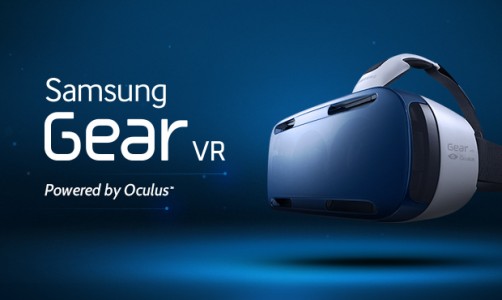
Samsung and Oculus VR are expected to release their collaborative project, the Gear VR, sometime before the end of the year. The headset uses the Galaxy Note 4 to power a completely untethered virtual reality experience and will be Oculus VR’s first actual step into the consumer market, since their own headset isn’t expected out until next year at the earliest.
Oculus VR has always been upfront about their goal with the Oculus Rift.
“We see one in every home,†Palmer Luckey, inventor of the Rift, said in a recent interview. But in the same interview, Luckey said it won’t be your average person who adopts virtual reality first. “The people who are going to be buying this initially are going to be gamers, probably hardcore gamers.â€
So why would they be helping out Samsung, a potential competitor?
One reason could be that Oculus knows that the Gear VR won’t be a serious contender because of pricing, hardware and platform issues — and meanwhile, the partnership lets Oculus expand its brand into the Android market.
Gear VR’s pricing problem
The first issue is the cost.
The Gear VR headset is expected to cost $199.
But it’s just useless plastic without a Galaxy Note 4 slotted into it.
So, at the cheapest, the set up will cost around $500, assuming you purchase the Note 4 on contract.
Control options will be limited to the touch screen built into the side of the headset, unless you also spring for peripheral controllers.
And you will also have to provide your own headphones for decent sound, as the headset does not come with any built in.
All of these pieces together add up to a hefty price that few will be willing to spend on untested technology.
Gear VR’s hardware issues
Another issue that doesn’t bode well for Gear VR is the hardware itself. And it’s not just the fact that it only works with the Galaxy Note 4, and no other device.
Unlike the Oculus, the Gear VR lacks depth tracking, so the device won’t register when users lean forward or around corners. This was an issue with the DK1 version of the Oculus Rift, but was addressed with the DK2 through the use of an external camera.
The lack of positional tracking increases the potential for motion sickness.
And while the resolution is higher than the current Oculus DK2, the field of view is slightly smaller and the Oculus and images blur in the periphery.
Gear VR’s Android problem
There are also programming challenges that may prevent developers from adopting the platform.
This will limit the number and variety of virtual reality experiences available for early adopters, further discouraging them.
Google’s requirements for how code is developed on their platforms give headaches even to industry legends like John Carmack.
Plus, programming for the Gear VR has the added challenge of managing power consumption on a mobile device.
If you create a game or experience that pushes the thermal too hard, not only do you drain the battery faster, but you run the risk of overheating the entire phone. A graphically intense experience might force you to plug in just to give your phone enough juice to keep going, defeating the purpose of wirefree virtual reality. So whatever experiences do get made will be greatly constrained compared to the experiences available for the Rift.
Should We Be Worried?
With all these obstacles in its way, the future doesn’t look bright for the Gear VR.
But I don’t think Oculus VR is really concerned with having it be a runaway success. For them, their whole focus is on healthy steps towards the future of virtual reality, and Gear VR is helping them get there.
“The good news at having [Facebook] behind us is that we can now afford to play that long game,” said Oculus VR’s Luckey in a recent interview. “Rather than having to make money now or we stop existing and someone else takes over, we can think about the best thing to do for the long-term of virtual reality.”
Everything about the Gear VR prepares Oculus VR for their ideal future of virtual reality, giving them invaluable real world consumer experience. The virtual user interface they’re developing for Gear VR is the same one they plan to launch in the retail version of the Oculus.
This vital practice period will give both users and developers a peak into what the future of virtual reality will be like, and more importantly, help them figure out what needs to be done to get there.
- 5 great ideas from Ready Player One - February 27, 2015
- OSCC14: Comfort key to VR success, says Oculus scientist - November 14, 2014
- Why Gear VR benefits Oculus more than Samsung - September 24, 2014
